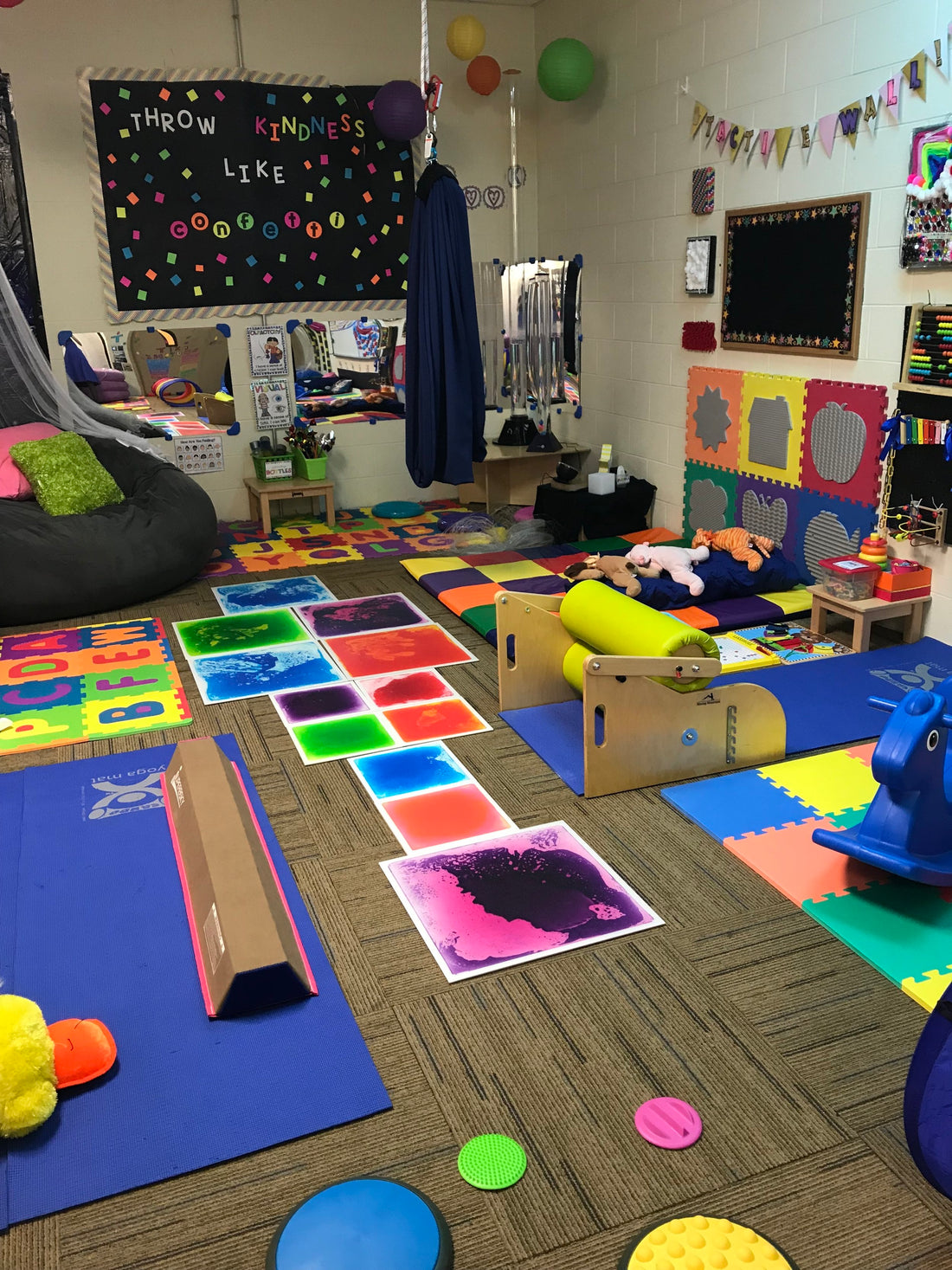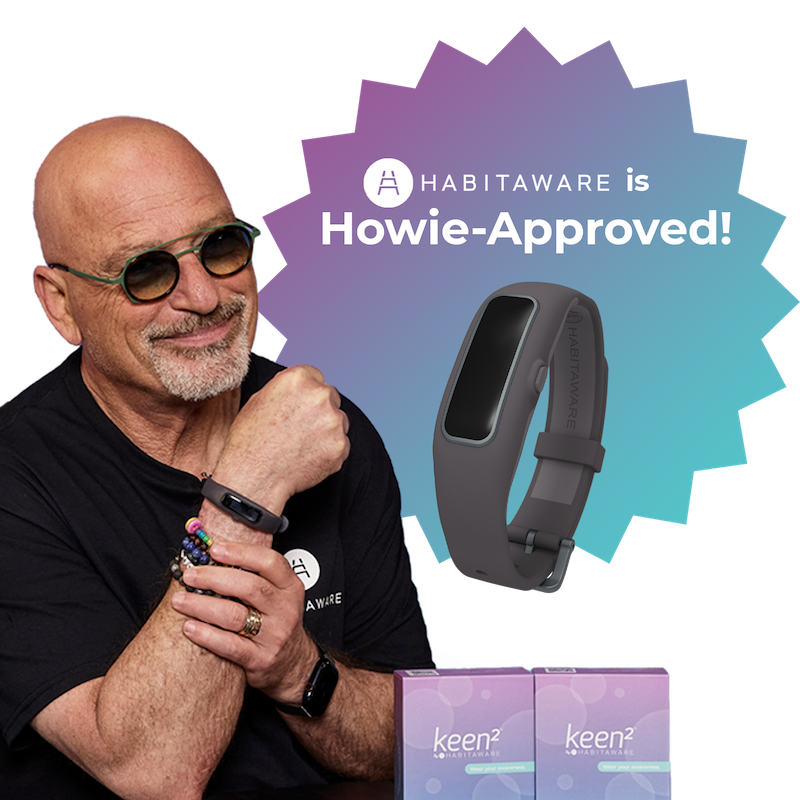Each new school year brings new experiences – and new stresses – for parents and kids to learn and grow. School is stressful, often resulting in an uptick of skin picking or hair pulling behaviors that we thought magically disappeared in the glow of the summer sun.
Today, our Keen family member, Amy Hiller, shares her experience as an educator and behavioral coach to help parents and kids transition back to school without losing their cool (or their hair, or nails, or skin!). Thank you Amy, for taking time from your life to share these tips with your Keen family around the world!
love + awareness,
Aneela and the HabitAware team
Behavior Patterns, Triggers & Replacements
by Amy Hiller
As a special education teacher of 12 years and now a supervisor and instructional coach, I have become very passionate in the area of human behavior. Understanding different behaviors, patterns and triggers has become a bit of an obsession of mine in both my professional and personal lives.
As many of my friends and family members know, I have been a hair puller my whole life. I found Keen by HabitAware, the dermatillomania and trichotillomania awareness bracelet a few months ago and it has been a life-saver for me! It has helped me take control of hair pulling and picking, just as it has helped many others take control of their BFRBs (Body Focused Repetitive Behaviors).
I’ve always believed in leading by example, and using my Keen awareness bracelet is the perfect way for me to do this in my role as a leader in education. Since purchasing Keen almost 5 months ago, I have been using it to tell my story and to teach both adults and kids how to track unwanted, damaging behaviors and replace them with healthy, positive ones.

I have many students with sensory needs, BFRBs and other seemingly benign behaviors, like thumb sucking and hair twirling. I have been able to work with and teach these kids how to regain control and retrain their brain through the use of Keen techniques and replacement strategies that have been successful for me.
For example, one of my 2nd graders is a thumb sucker. He has tried everything to stop, including wearing a thumb guard and a chew necklace, holding fidgets, chewing gum and squeezing a stress ball. Nothing seemed to work for him.
One day I told him about my Keen habit tracking bracelet. He was extremely intrigued to know that there were other people going through the same struggle. He also became less anxious about his behavior. I told him how Keen helps me identify my triggers and develop awareness in a safe way. After I identify the trigger, then I am able to sense how I am feeling at that time – anxious, bored, frustrated, upset, etc. I told him to give this process a try. For a week, we tracked how often he sucked his thumb and how he was feeling at that moment. Most of the time, the behavior occurred when he was feeling anxious. Since that was the case, I shared my replacement strategies with him for when I feel anxious.
I told him when I feel Keen’s vibration indicating I’m about to pull or pick my hair, I keep both hands at my side and simply squeeze and make a fist back and forth over and over again until my arm feels tired and until any urge to pull goes away. I also showed him the deep breathing option with Keen’s button and light. He loved watching the light signal for deep breathing, which was a good distraction for both of us.
We practiced these replacements for a week and saw great results! His thumb sucking decreased significantly. At times he was able to become self-aware of when he was about to put his thumb in his mouth, and instead he squeezed his hands and took deep breaths. He also needed gum to chew for the oral input.
Additionally, we had a few lessons in our school’s sensory room where we focused on sensory input including tactile and proprioception (body awareness in space). He wore wrist weights for the deep pressure around his wrists, which also served the purpose of keeping his arms tired so that he wouldn’t want to suck his thumb. He also discovered a pattern in his behavior. He said when his thumb feels “dry” he would suck his thumb. In order to replace that behavior, he now keeps hand lotion with him at all times. He has also requested his own set of wrist weights and a Keen!
Furthermore, I used Keen’s systems and procedures to train teachers on how to understand the function of different behaviors. Every behavior has a function, or a reason. Everyone engages in some type of behavior every single day, and the reasons are categorized into four functions. Cornerstone Autism Center’s Morgan McClellan and BCBA Megan Graves explain the four functions with a description and example for each.
- Sensory Stimulation: “A person’s own movements/actions feel good to that individual. For example, a child twirls his or her hair as they sit for an extended amount of time. If twirling hair gives that individual the sensory input they are seeking, then hair twirling will continue.”
- Escape: “Something is (or signals) an undesirable situation and the person wants to get away from it. For example, a therapist says, ‘Wash your hands,’ and the learner runs out of the bathroom.”
- Access to Attention: “Someone desires access to social interaction(s). For example, the child screams, ‘Look at me!’ If screaming gets access to attention, then screaming will continue.”
- Access to Tangibles: “Someone wants access to a specific item or activity. For example, Michelle takes the iPad away from Aaron, so Aaron pinches her. If pinching gets access to the iPad, then pinching will continue.”
After teachers are able to understand functions and triggers, they are able to develop interventions to help their students change and replace unwanted behaviors.
At Ogden Elementary School, I’ve made it my mission to help students understand why they are engaging in unwanted behaviors and help them to replace these behaviors. One of my biggest accomplishments that I am proud to provide to our students is our Sensory Room.

Why do we need Sensory Rooms?
Children and adults have a tendency to become over – or under – stimulated by their surrounding environment. It was my goal to create a Sensory Room at Ogden with equipment, materials and resources available for sensory input. Our students have unique learning differences and it’s important to build time into our schedules and curriculum for sensory breaks to help students who are over or under stimulated learn to make positive choices to balance their sensory lives.
What is a Sensory Room?
A Sensory Room is a safe place where students and adults can go to relax, be creative and stimulate and develop their minds. This room is NOT used for a student to calm down or as a reward for positive behaviors. It is tailored to the needs of our diverse learners as well as our students with various sensory needs and used as a scheduled intervention, which is part of a student’s curriculum and educational program. Students learn about the 7 sensory systems and the equipment and tools they need to help themselves feel more organized, relaxed and focused.
What are the 7 sensory systems?
These are the 7 sensory systems and how they can be used to create sensory balance through developing and engaging our senses:
- Visual – LED lights, bubble tubes, and ocean wave projectors can stimulate or calm the sense of sight.
- Auditory – Soft instrumental music, and meditation produce a very calming vibe, while sound therapy pillows stimulate the sense of hearing.
- Olfactory (Smell) – Lavender essential oil, scented markers, lotion and chapstick can stimulate or sooth the sense of smell.
- Oral – Flavored chew tools, straws, whistles, harmonicas, recorders, pinwheels, and bubbles can stimulate or calm urges in the mouth.
- Tactile – Mermaid sequin pillows, interactive felt boards, fine motor games, liquid floor tiles, fiber optics, fidget toys, sensory brushes, and massaging tools can stimulate or calm the sense of touch.
- Proprioception (Body Awareness) – A squeeze machine, ball pit, tunnel, sensory sock, weighted blanket, progressive muscle relaxation and wrist weights can stimulate or calm the sense of body awareness in space.
- Vestibular (Movement/Balance) – A sensory swing, rocking chair, rocking horse, balance beam, spinning pod chair and stability ball can stimulate or calm the sense of balance.
What are the benefits of a Sensory Room?
A dedicated Sensory Room can help rebalance a person. Here’s the impact we’ve seen in the students at Ogden:
- Increased attention and focus
- Reduced agitation and anxiety
- Increased positive behaviors and motivation
- Increased positive decision-making to balance sensory lives
- Increased communication
- Increased appreciation for the love of learning
What is a sensory diet and how can it help me?
A sensory diet is a data designed, personalized activity plan that provides the sensory input a person needs to stay focused and organized throughout the day. Sensory diet activities are different for everyone, depending on what you need to stay regulated. Activities are listed in a routine and can involve any of the 7 sensory systems and tools listed above. Sensory diets help us because they improve the brain’s ability to process sensory information so that we are able to stay in contact with our surroundings. (HabitAware’s Keen is now the “main course” in my sensory diet!)
How can I create a Sensory “Space” in my home, or at my desk at work or school?
The first step in creating a sensory space at home, work or school begins with understanding your sensory systems and discovering what you need to feel relaxed or stimulated. The next step is to find an area, nook or corner that you have easy access to arrange, build and create a sensory focused space. Once you have a space where you won’t be interrupted, and an idea about what sensory objects you need, it’s time to figure out your top 5-10 tools: stress balls, tactile fidgets, dim lighting, instrumental music, canopy with comfortable seating, massage mats, etc. to add to your space without breaking the bank! There are endless ways to create a functional sensory space on a budget.
How can I leverage a Sensory “Space” to help manage my Trichotillomania or Dermatillomania?
In addition to my Keen, my sensory space has truly helped me not only understand my BFRBs, but it has helped me find healthy alternatives to manage my Trichotillomania and Dermatillomania. My space gives me the sensory stimulation I crave when I have the urge to pull my hair or pick my skin. Keen helped me realize I have the urge to pull or pick for different reasons.
If it is because of boredom, then I use items in my sensory space that will stimulate my senses in a healthy way such as doing progressive muscle relaxation, lifting weights or doing puzzles. If it is due to anxiety or stress, then I use objects such as my acupuncture mat, sensory massage ball, or I’ll do yoga stretches and practice deep breathing. If it is because I’m struggling with maintaining attention, then I squeeze my stress ball or clench my fists, and listen to instrumental music to help me focus. I learn something new about myself and what I need every day.
< See how others are taking control of nail biting, skin picking and hair pulling: Reviews from the Keen Family >
Some days are more of a struggle for me to control my urges then others, but having my sensory space, my Keen and my amazing support system has given me the strength to speak up and not be afraid or shameful to share my story. I am so fortunate to be part of the Keen family, and I’m so grateful to be able to share my story with all of you!
~ Amy
About Amy Hiller

Amy Hiller is a Special Education Case Manager, MTSS Coordinator and Instructional Literacy Coach at Ogden Elementary School, within the Chicago Public Schools. For more awesome ideas to help your kids learn and grow, please follow Amy on Instagram at @winksmilelearn.
About Keen by HabitAware


